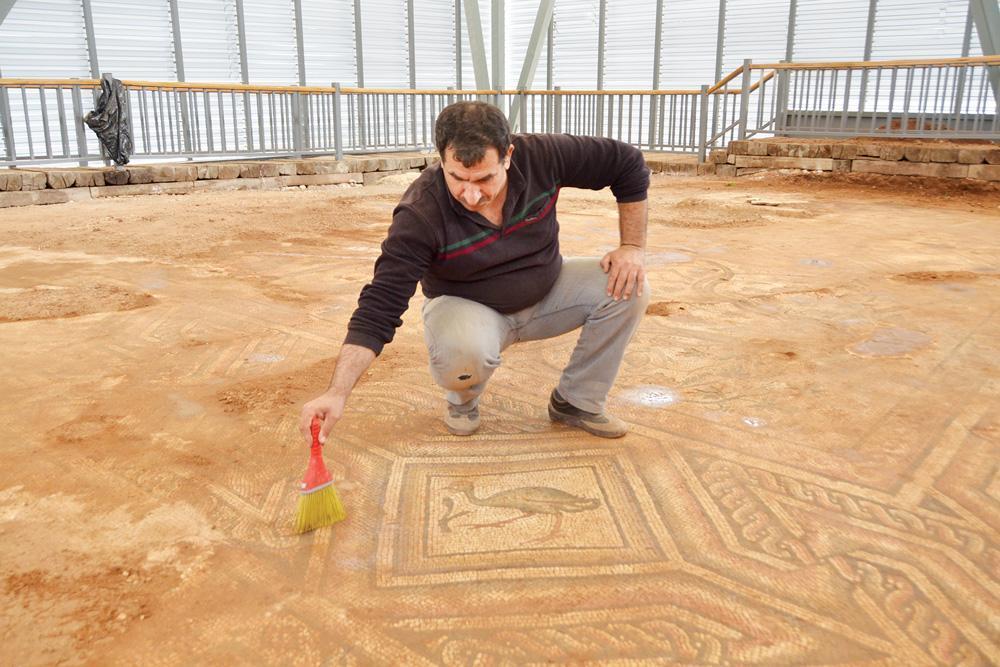
A mosaic unearthed nine years ago during archaeological excavations in the ancient city of Perre in the eastern province of Adıyaman is set to become a feast for the eyes of visitors.
The 155-square-meter mosaic was found in 2009 in Perre, one of the five major cities of the Commagene Kingdom — a border kingdom which existed from 162 B.C. to A.D. 72 between the Roman and Persian empires. The masterpiece will be displayed in its original place.
Unearthed during excavations carried out by the Adıyaman Museum Directorate, the mosaic features various figures and has been covered with textile fabrics and earth for protection.
In its center, the Roman-era mosaic features motifs of grape leaves, grapes, deer, roosters, chickens and crane birds.
On its sides, the mosaic is engraved with hexagonal and diamond-shaped figures along with a heart and 3D figures.
As part of projects initiated in 2013 for Perre, walking routes have been designed around the mosaic and are expected to finish soon, according to officials.
Following the construction of a protection house in the ancient city, Adıyaman Museum Directorate teams have opened the cover of the mosaic and finished cleaning it.
A report will be prepared by the Gaziantep Restoration and Conservation Regional Lab Directorate after examinations. Later, restoration and conservation works will be initiated in the ancient city.
Speaking to journalists, Adıyaman Museum Director Mehmet Alkan said 130 square meters of the mosaic was found well-preserved.
Alkan said the mosaic dated back to the 5th century, adding that it was created with black, white and blue ceramics.
“According to the report of the relevant teams, we will carry out our restoration works on the mosaic and begin showing it to visitors,” he said.
The ancient city of Perre, located between the capital of the Commagene Kingdom, Samosata—modern day Samsat — and Melitene — now Malatya— was reputed for its beautiful waters in the Roman times. It is also home to stone tombs and a fountain that is still functioning.
The city served as a transit place where travelers, caravans and armies rested during their travels.
The archaeological site directly beside the ancient city is waiting to be discovered.